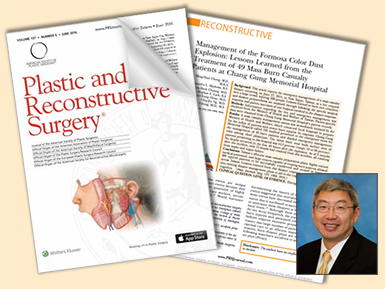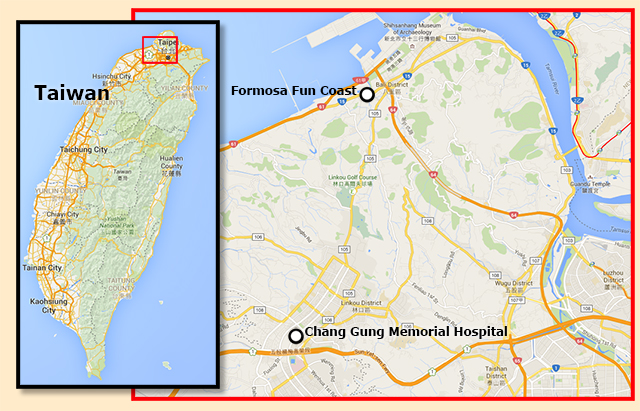Colleagues at U-M and Chang Gung, in Linkou, worked together to analyze the latter institution’s response following a 2015 amusement park fire that injured nearly 500 people, many severely. Published in this month’s Plastic and Reconstructive Surgery, the paper marks the first completed study to spring from U-M’s newly formalized partnership with Chang Gung hospital. It examines how thoughtful emergency planning at the national and local levels helped save a lot of lives.

“This was a tragic, high-profile event, unmatched by any other disasters that we’ve seen in the literature about severe burn injuries. But it demonstrated the efficiency of the Taiwanese disaster preparedness program,” said Dr. Kevin Chung, a U-M Surgery Professor and the paper’s senior corresponding author. “Studying the incident was a great way to not only showcase our new partnerships in Taiwan, but the lessons learned can also help improve readiness and patient care everywhere.”
The fire occurred June 27, 2015 during an evening concert at Taiwan’s Formosa Fun Coast water park. The apparent cause: a fine color powder dispersed over the crowd that somehow ignited, engulfing attendees in flames. In all, 499 people were injured and treated among 48 area hospitals. Chang Gung ultimately received 49 patients, 17 of whom suffered burns across more than 50 percent of their bodies, according the report.
Notified of the explosion immediately by Taiwan’s Ministry of Health and Welfare, Chang Gung mobilized more than 330 doctors, nurses, paramedics and administrators to manage the crisis. Interestingly, just five days before the disaster, hospital leaders had run a practice drill on a hypothetical chemical explosion scenario as part of a Joint Commission International accreditation process. When real disaster struck, roles and responsibilities were well known.
“Because they’d gone through this drill, it was still fresh in everyone’s mind,” Dr. Chung said. “Without planning, when this happens, there is absolutely no way that any institution could manage the number of patients they absorbed and treat them successfully. The take-home message is that preparation is critical to ensure that lives are saved.”
Among the 499 victims across all of the involved hospitals, just 12 passed away – and none with the first 48 hours. Of the 49 accident victims treated at Chang Gung, only two succumbed.
“The mortality rate for this kind of severe burns is typically extraordinarily high – above 50 percent – so their outcomes were incredible, given the circumstances,” Dr. Chung said. “We wanted to share a collective understanding of a unique situation. Hopefully the world can learn from this experience and be better prepared to handle the next mass trauma situation.”
Dr. Chung and other U-M colleagues are traveling to Taiwan later this month for meetings with collaborators and leaders at Chang Gung hospital and Academia Sinica, the country’s leading medical research institute. Formalizing partnerships with both institutions will open doors for further joint research and collaboration.
“Hopefully this will encourage more U-M colleagues to engage counterparts in Taiwan,” said Dr. Chung. “The ability to collaborate with the country’s largest hospital system and its most prestigious research institute will give us the chance to share knowledge and resources that will improve the care of patients and enhance the experience of our students and faculty members.”

